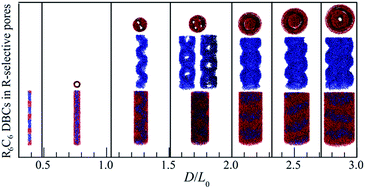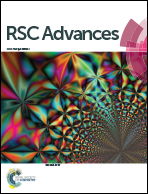Self-assembly of symmetric rod-coil diblock copolymers in cylindrical nanopore
Abstract
Self-assembly of rod-coil (RC) symmetric diblock copolymers (DBCs) in a cylindrical nanopore is investigated by performing dissipative particle dynamics simulation. A morphological phase diagram of R6C6 DBCs with respect to the properties and diameter of pores is presented. In nonselective and weak rod-selective pores, stacked disks, single helix, and double helix are assembled. While in strong rod-selective nanopores, coil blocks assemble into stacked disks, cylinder, and then zigzag structure in the interior region of pore with the increase in the pore diameter. The zigzag structure evolves into curb chain-like structure, corrugated pipe and single helix tube with further increase in the pore diameter. The zigzag structure is induced by the movement of rod blocks toward the pore surface and subsequent assembly near the surface. In these interesting structures, rod blocks align parallel to the pore axis and the axial component of the mean square end-to-end distance of rod blocks is generally bigger than that in the bulk. At last, a morphological phase diagram in terms of the block length and the pore diameter is obtained. Our simulation results demonstrate that the synergetic interaction among the rigidity of the rod block, the incommensurability of the pore diameter, and the preference of the pore surface for the rod block, plays an important role in the assembly of RC DBCs.


 Please wait while we load your content...
Please wait while we load your content...